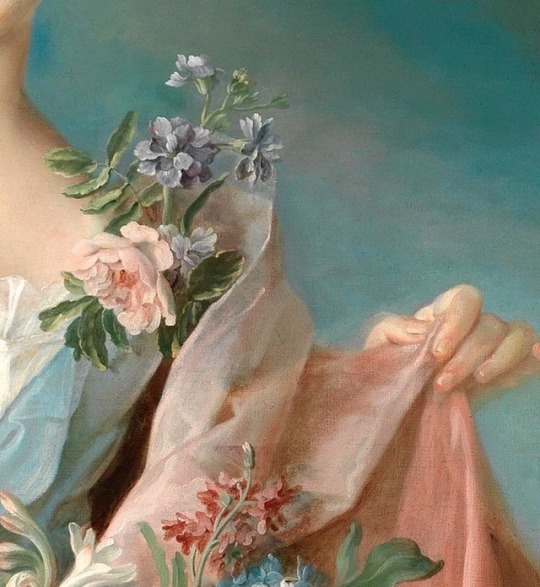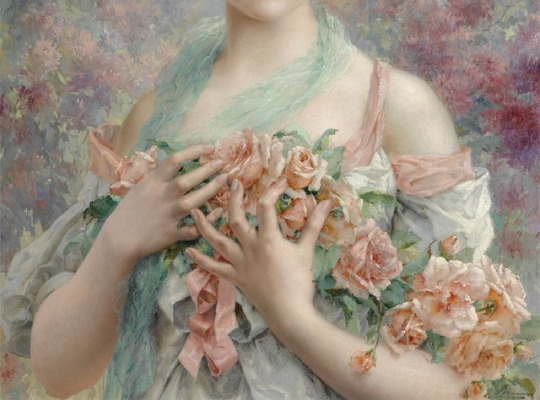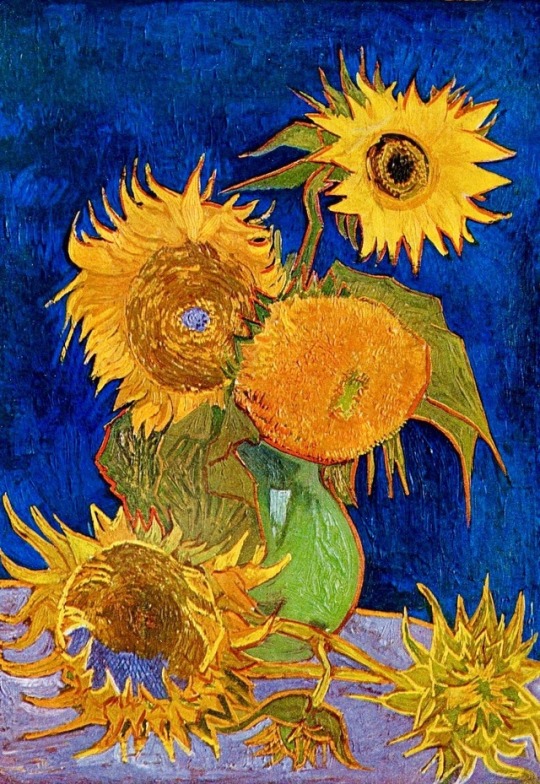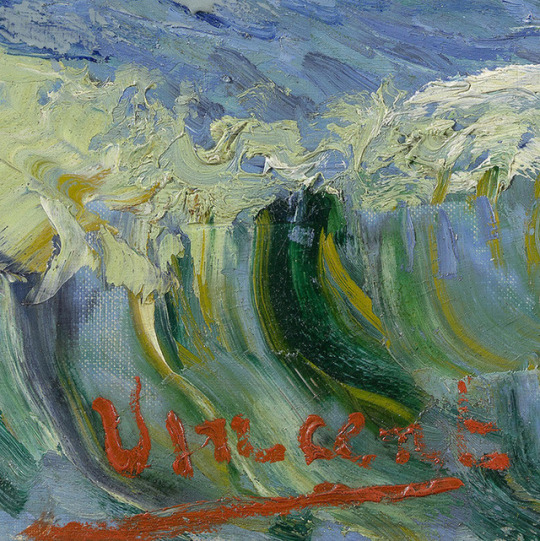I keep all the images that make me feel something, there are the descriptions under that. Share love and art.
Don't wanna be here? Send us removal request.
Photo

Henryk Siemiradzki
Polish, 1843-1902
The new bracelet (detail)
18K notes
·
View notes
Photo

Almond Blossom, 1890, by Vincent van Gogh (1853-1890)
The Starving Artist
Recently I read a book called ‘How to Sell Your Art Online,’ by Cory Huff. It hooked me as Huff began by questioning the “starving artist” myth and explaining how it originated. It made me realise how I wanted to more deeply research it, as it has been a popular belief for much longer than I had thought. This tale of the starving artist - poor in material wealth but rich in conviction - is still prevalent today. As an art student myself, I have confronted others’ judgement on the creative field.
The starving artist is a trope that portrays the creative person - musicians, writers, visual artists, etc. - as a person that sacrifices any material wealth or resources for the more “bohemian” lifestyle of poverty and financial instability - voluntary or otherwise. While this subculture existed for centuries, one of the men to truly popularize this view on the creative lifestyle was French novelist Henri Murger (1822-1861). Murger published ‘Scènes de la vie de bohème,’ a romanticization of poverty. This collection of stories painted the lack of wealth and resources as playful and passionate. It portrayed this way of life as above that of the wealthy, or even the royal. Even though the mainstream regarded them as uncivilized, these artists were noble and nothing less. On another note, Murger died destitute at the age of 38.
To give Murger some credit, however, he stressed that this way of life was only supposed to be temporary, a kind of transitional period as the artist paved their way to success. He also categorized these Bohemian artists into more specific situations. He stressed that:
“Bohemia is a stage in artistic life; it is the preface of the Academy, the Hotel Dieu, or the Morgue.”
Once a common term for an ethnic group, Murger translated “bohemian” as an artistic term. However while the mainstream picked up the Bohemian myth, Murger’s warnings unfortunately went unnoticed. This view of the Bohemian artist grew and was eventually adopted as truth.
Today the struggling artist stigma continues. Many often bring up the life of Vincent van Gogh, taunting artists with a life of misery in order to prove their worth and conveniently forgetting the many artists that were successful, and didn’t become a romanticized story of mental illness. The myth has pushed many out of creative fields as the thought that anything remotely creative must be unworthy. This stigma is also often used as justification for not compensating artists. While I can’t compare every contemporary artist to Matisse or Picasso, there is a stage where we must be professional and embrace the gift of communication, information, and marketing in order to elevate our status as artists.
603 notes
·
View notes
Photo

Portrait of a Girl with Cherry Blossom. Jules-Cyrille Cave
1K notes
·
View notes
Photo

An Academy by Lamplight, Joseph Wright of Derby
611 notes
·
View notes
Photo

A Farmyard in Normandy, Claude Monet
Size: 81.5x65 cm Medium: oil on canvas
42 notes
·
View notes
Photo

On This Day in 1888
Van Gogh cuts off ear
A depressed Van Gogh cuts off his ear, reportedly after his friend, artist Paul Gauguin, says he’s leaving the “yellow house” in Arles, France, where Van Gogh is renting rooms. This dashes Van Gogh’s hopes of creating an artist colony there. Some historians will doubt Van Gogh cut his own ear and will blame Gauguin for the injury.
3 notes
·
View notes
Photo

The Fall on the Road to Calvary, 1517, Raphael
Size: 229x318 cm Medium: oil, canvas
35 notes
·
View notes
Photo

The Ram (The Spectral Cow), 1928, Salvador Dali
41 notes
·
View notes
Photo

Olive Grove - Orange Sky, 1889 Vincent van Gogh. oil on canvas
84 notes
·
View notes
Photo

Olive Trees with Yellow Sky and Sun, 1889 Vincent van Gogh. oil on canvas
121 notes
·
View notes
Photo

The Yellow Books, 1887 Vincent van Gogh. oil on canvas
4K notes
·
View notes
Photo


“Portrait of an Elegant Lady” (detail) by François-Hubert Drouais (1727-1775).
30K notes
·
View notes
Photo


Roses still life details | Franz Xaver Gruber & Jenny (Johanna) Fischer
5K notes
·
View notes
Photo

Details of Jeune fille en fleurs, by Émile Vernon (1872-1920)
2K notes
·
View notes







